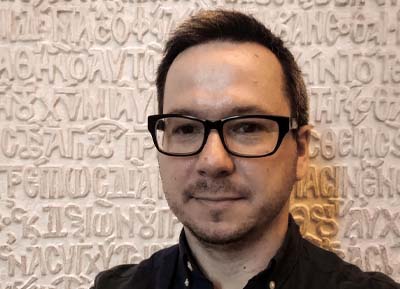Byzantine Dialogues from the Gennadius Library: ‘By this conquer’: Relics as Weapons in Byzantium
Presented By
The Gennadius Library
Speaker(s)
Brad Hostetler, Kenyon College
* The Webinar will be in English
By registering you will be able to submit your questions through Q&A on Zoom.
Abstract
The weaponization of relics in Byzantium is attested in chronicles, military treatises, and inscriptions. This practice began with Constantine I, who, according to Eusebius, made a copy of the “sign” from his vision and carried it into the battle at Milvian Bridge. From that time forward, Byzantine emperors were accompanied on campaign with sacred objects, including relics of Christ, the Mother of God, and the saints. The sacred remains of holy figures were believed to be the protectors of, and divine aids to, the troops, the emperor, and the empire. One of the richest sources on this practice are epigrams that are, or were, inscribed on reliquaries. They document the power that was invoked to ensure victory over one’s enemies—both spiritual and earthly. This lecture examines the material and rhetorical strategies of epigrams, and the ways in which the visual and textual programs of reliquaries communicated and activated the martial function of relics.
About the speaker
 Brad Hostetler is Assistant Professor of Art History at Kenyon College. He specializes in the art and material culture of Late Antiquity and Byzantium, with a focus on portable luxury objects from the ninth through the twelfth centuries. His research focuses on the relationships between texts and images, including ekphraseis about, and words inscribed on, works of art. He is currently working on a book that examines the nature and meaning of relics and reliquaries in Byzantium through the lens of inscriptions. His work has been supported by grants and fellowships from the Gladys Krieble Delmas Foundation, Dumbarton Oaks Research Library and Collection, and the Metropolitan Museum of Art.
Brad Hostetler is Assistant Professor of Art History at Kenyon College. He specializes in the art and material culture of Late Antiquity and Byzantium, with a focus on portable luxury objects from the ninth through the twelfth centuries. His research focuses on the relationships between texts and images, including ekphraseis about, and words inscribed on, works of art. He is currently working on a book that examines the nature and meaning of relics and reliquaries in Byzantium through the lens of inscriptions. His work has been supported by grants and fellowships from the Gladys Krieble Delmas Foundation, Dumbarton Oaks Research Library and Collection, and the Metropolitan Museum of Art.